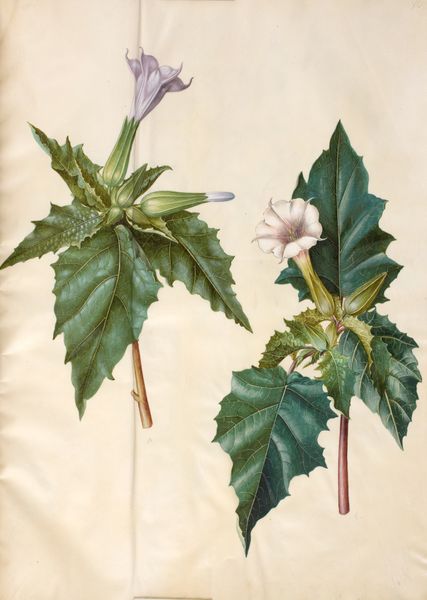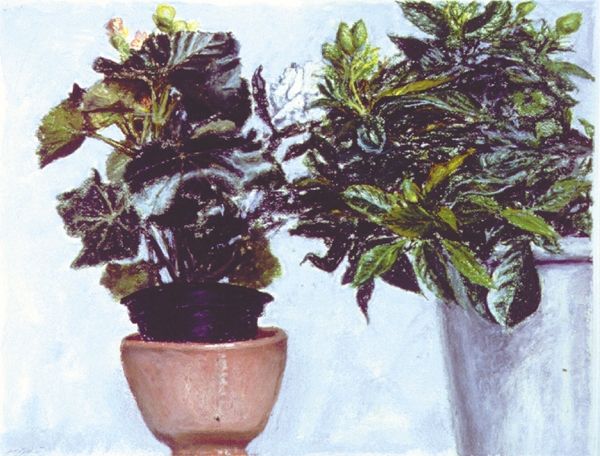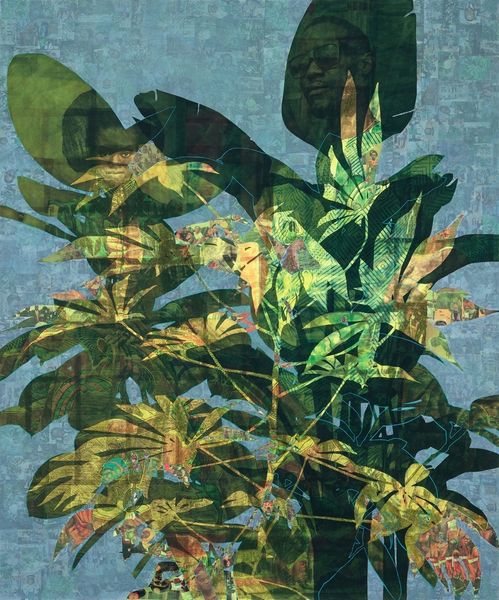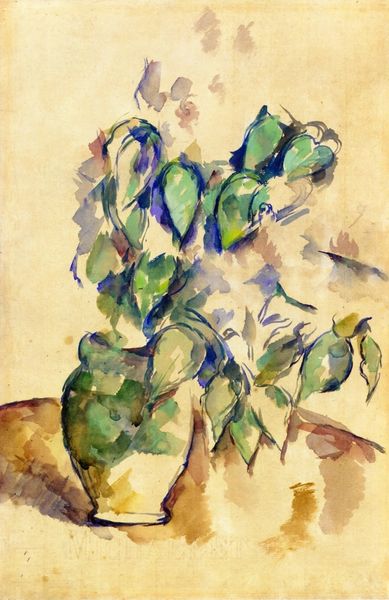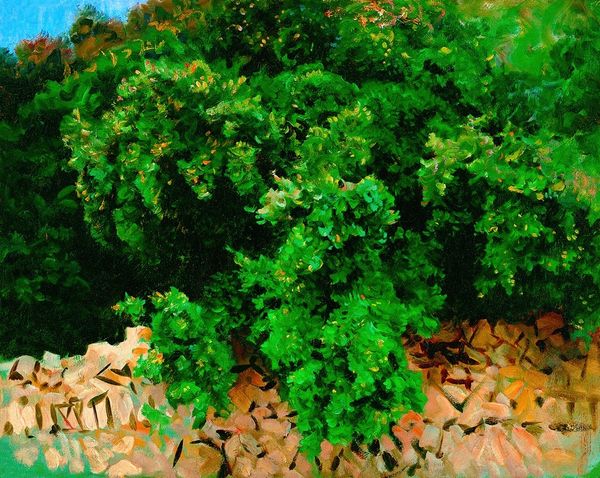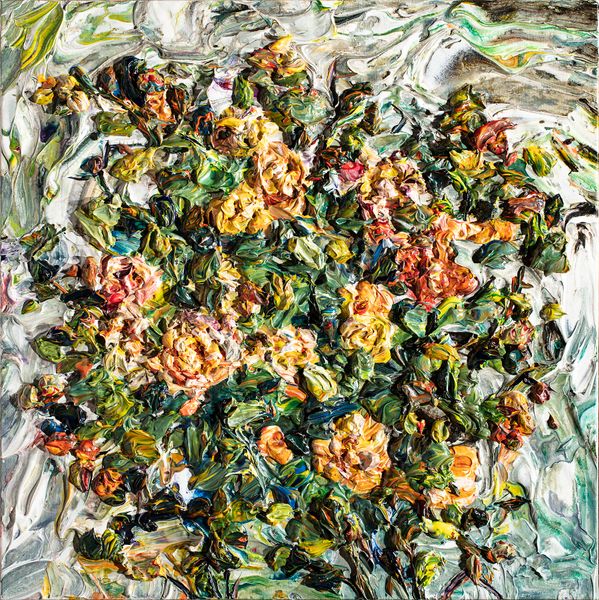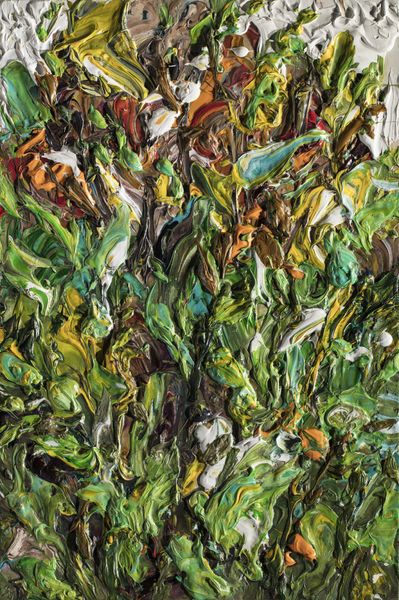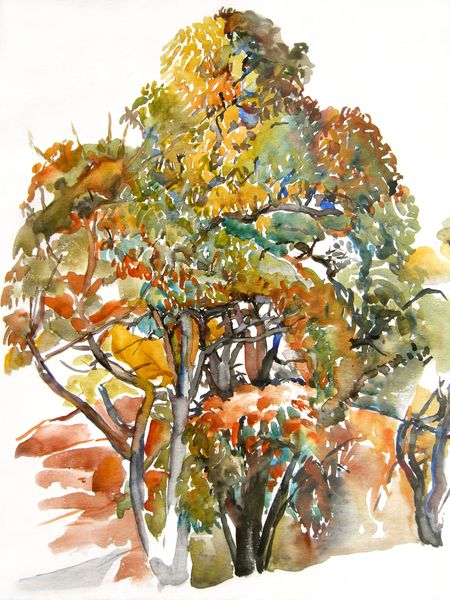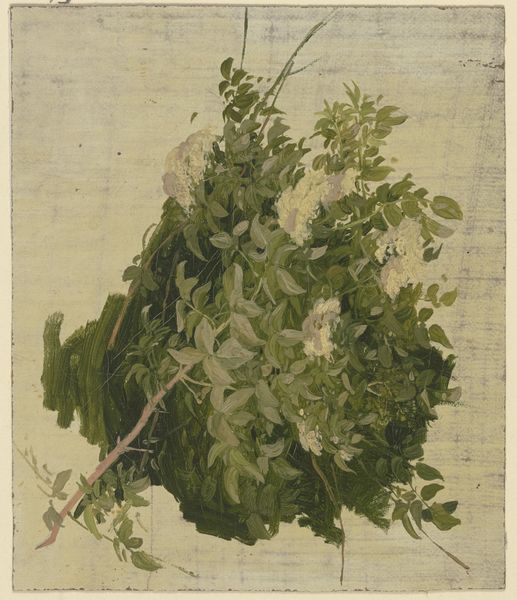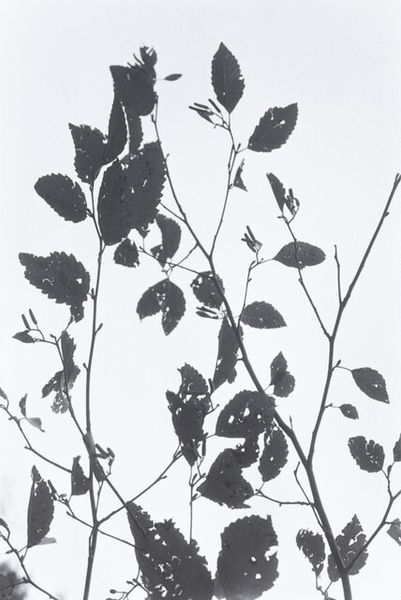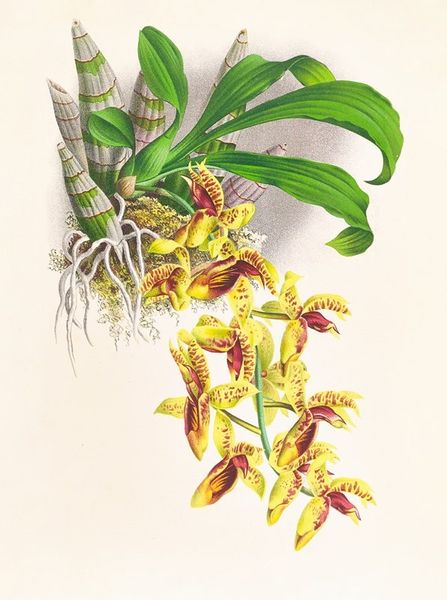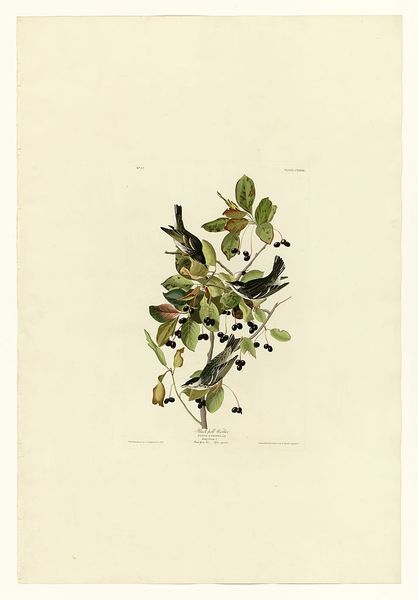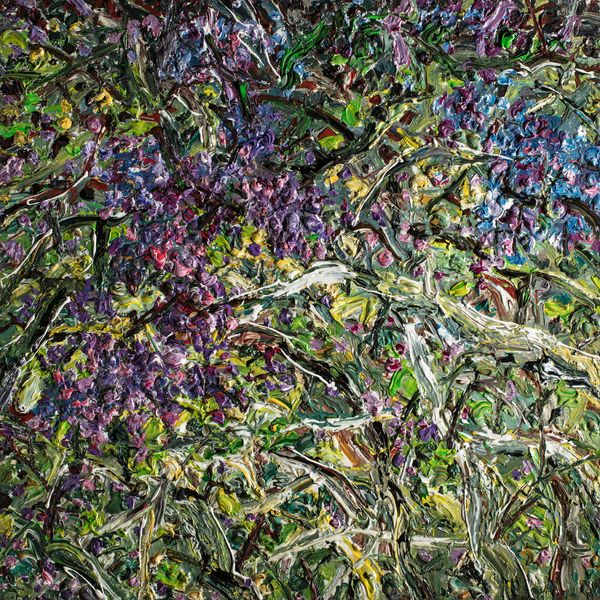
tempera, painting, watercolor
#
organic
#
tempera
#
painting
#
landscape
#
flower
#
watercolor
#
plant
#
botany
Dimensions: 61 x 39 cm
Copyright: Hubertine Heijermans,Fair Use
Editor: We’re looking at "Vine-stock in Spring" by Hubertine Heijermans, created in 1976 using tempera and watercolor. It feels delicate and almost dreamlike. The way the leaves are rendered makes it so fresh, but I’m not sure what to make of the empty white background. What’s your interpretation of this work? Curator: It's interesting you pick up on that sense of freshness. Consider that Heijermans was working within a specific historical context, the late 20th century. Artists then were increasingly questioning the established art institutions, like the salons and academies, and moving towards more personal expressions. The rendering of this subject in tempera and watercolor points to an interest in traditional, "domestic" artistic techniques rather than oil painting or bronze sculpture. Do you see this painting fitting within any movements you've studied? Editor: Maybe a return to nature, rejecting the industrial world? Curator: That's a perceptive observation. Now consider where such art would have been exhibited. Was it meant for a grand museum, or for more intimate spaces? This piece arguably participates in the trend towards accessible art meant for private enjoyment rather than public spectacle. The medium contributes to this intimate effect. The "unfinished" quality created by the negative space pushes back against the traditions of earlier painting styles, democratizing art. Editor: So the white background almost makes it more…personal? It feels unfinished in a way, less formal than a completely filled canvas. Curator: Precisely. And think about the role of botanical illustration. How does this work both conform to and deviate from that tradition, especially when we consider how 'feminine' painting and botanical study were often constructed in the past. Editor: I see now! It's a painting about art's place in culture as much as it is about vines. The artist expresses a point of view. Curator: Exactly. Reflecting on how the work defies historical settings makes it interesting to consider in relation to the changing expectations in the public’s appetite for art. Editor: I hadn't considered the white space as a political statement. Thanks, it helps appreciate how the painting challenges conventions.
Comments
No comments
Be the first to comment and join the conversation on the ultimate creative platform.

